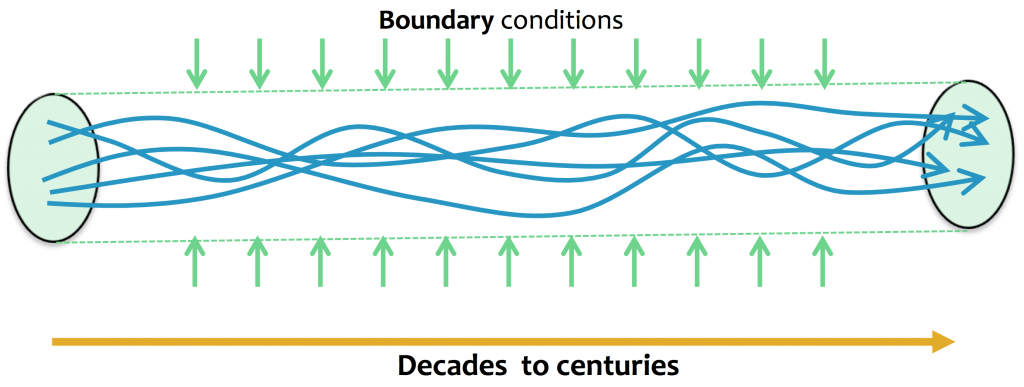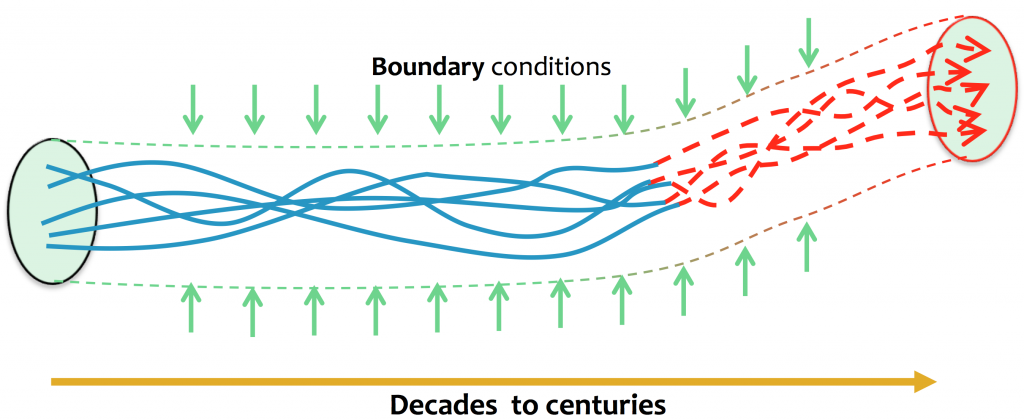What’s the difference between forecasting the weather and predicting future climate change? A few years ago, I wrote a long post explaining that weather forecasting is an initial value problem, while climate is a boundary value problem. This is a much shorter explanation:
Imagine I were to throw a water balloon at you. If you could measure precisely how I threw it, and you understand the laws of physics correctly, you could predict precisely where it will go. If you could calculate it fast enough, you would know whether you’re going to get wet, or whether I’ll miss. That’s an initial value problem. The less precise your measurements of the initial value (how I throw it), the less accurate your prediction will be. Also, the longer the throw, the more the errors grow. This is how weather forecasting works – you measure the current conditions (temperature, humidity, wind speed, and so on) as accurately as possible, put them into a model that simulates the physics of the atmosphere, and run it to see how the weather will evolve. But the further into the future that you want to peer, the less accurate your forecast, because the errors on the initial value get bigger. It’s really hard to predict the weather more than about a week into the future:
Now imagine I release a helium balloon into the air flow from a desk fan, and the balloon is on a string that’s tied to the fan casing. The balloon will reach the end of its string, and bob around in the stream of air. It doesn’t matter how exactly I throw the balloon into the airstream – it will keep on bobbing about in the same small area. I could leave it there for hours and it will do the same thing. This is a boundary value problem. I won’t be able to predict exactly where the balloon will be at any moment, but I will be able to tell you fairly precisely the boundaries of the space in which it will be bobbing. If anything affects these boundaries (e.g. because I move the fan a little), I should also be able to predict how this will shifts the area in which the balloon will bob. This is how climate prediction works. You start off with any (reasonable) starting state, and run your model for as long as you like. If your model gets the physics right, it will simulate a stable climate indefinitely, no matter how you initialize it:

But if the boundary conditions change, because, for example, we alter the radiative balance of the planet, the model should also be able to predict fairly accurately how this will shift the boundaries on the climate:
We cannot predict what the weather will do on any given day far into the future. But if we understand the boundary conditions and how they are altered, we can predict fairly accurately how the range of possible weather patterns will be affected. Climate change is a change in the boundary conditions on our weather systems.

